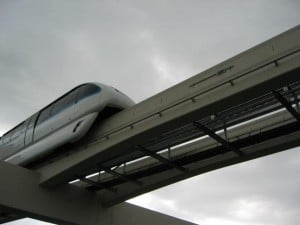Population is one of those areas that people should pay attention to. World population: 7-plus billion and growing. There are so many facets related to population, keeping current on all of the particulars is no easy task.
![360px-CBX_Parkchester_6_jeh[1]](https://alankandel.scienceblog.com/files/2012/12/360px-CBX_Parkchester_6_jeh1-e1371323265825.jpg)
There is more to population than just people. One aspect is the tracking and documentation of it as is characteristic in census taking. Data gathering is a big part of census taking. How and how much has the population grown and by what percentage over what period of time? What is the ethnic makeup? What is the percentage of people working? What is the percentage of people over age 65? Are these numbers increasing? Like I mentioned, many, many facets. One of the more interesting census aspects has to do with commute patterns.
One of the census reports dealing with this is: “Commuting in the United States: 2009, American Community Survey Reports,” from the U.S. Census Bureau. This specific report looks at such characteristics as commute time to work, mode share or, in other words, what the relationship is between those commuting by auto, public transportation, walking, etc., to give one example, and what the corresponding change is from one decade to the next, to give another. Aggregate numbers as well as percentages are also provided.
The specifics
Report authors Brian McKenzie and Melanie Rapino state, “In the United States, commutes make up less than 20 percent of all trips taken, but play a unique role within the mix of overall trips by determining peak travel demand across transportation systems. …
“The [American Community Survey] is an ongoing survey conducted annually by the U.S. Census Bureau that captures changes in the socioeconomic, housing, and demographic characteristics of communities across the United States and Puerto Rico. …This report discusses commuting characteristics for workers 16 years and over who were employed during the week prior to the [American Community Survey] reference week and did not work at home.”
Interestingly, in 2009, over 75 percent of American workers commuted to work solo by car, according to the authors – 81.5 percent of workers living in suburban neighborhoods drove to work alone, while the rate of those driving to work solo and residing in a “principal city” was 72.1 percent. Tme to get to work, incidentally, on average took 25.1 minutes.
Figure 2 in the survey, meanwhile, shows commuter data by mode for years 1960, 1970, 1980, 1990, 2000 and 2009. For all years except 2009 the source of information is “U.S. Census Bureau, Decennial Census,” while the information source for 2009 is the “U.S. Census Bureau, American Community Survey, 2009.”
From Figure 2, “Means of Transportation: 1960 to 2009,” in all years detailed, the private automobile accounted for the majority of commute trips.
In 1960, for example, around 41 million commuted in private automobiles plus the roughly 19 million commuter trips comprised of walking, using public transportation and other means, meant there were a total of approximately 60 million workers commuting using these modes. What this shows is that in 1960, of the approximately 60 million commuting workers, nearly 32 percent commuted on foot, used public transportation and other means, meaning workers commuting by private auto accounted for more than 68 percent of the total number commuting. Meanwhile, in 1960, the population of the United States was 179,323,175.
By 2009, U.S. population was well in excess of 300 million. From: Table 1. “Means of Transportation, Time Leaving Home, and Travel Time to Work: 2009,” it can be seen that 119,393,000 workers drove in cars, trucks or vans. Compare this to the 12,064,000 commuters commuting by public transportation, walking and other means. At any rate, in sum total, there were 131,457,000 commuters using “car, truck or van,” “public transportation,” “walking” and “other means.” (For more on commute mode category, comparision and statistical data and more, see: “Commuting in the United States: 2009, American Community Reports”).
Moreover, from 1960 to 2009, approximately 79 million private automobile commuters were added representing an increase of around 65.7 percent between those two years.
Down the road?
What will the next “Commuting in the United States: (year), American Community Survey Reports,” tell us? Will commuting via private automobile be less and therefore that via public transportation, walking and other means be more? Or, will the relationship between the categories stay the same?

Moreover, and in general, will motor vehicle use overall increase? What about for public and alternative transportation modes – will use of these likewise see increases? And how will air pollution levels be affected? Will the amount coming from transportation and other mobile sources be the same, more or less than what exists today?
I will be paying particularly close attention and as information becomes available, the plan is to provide reports regularly.
– Alan Kandel
Comments are closed.